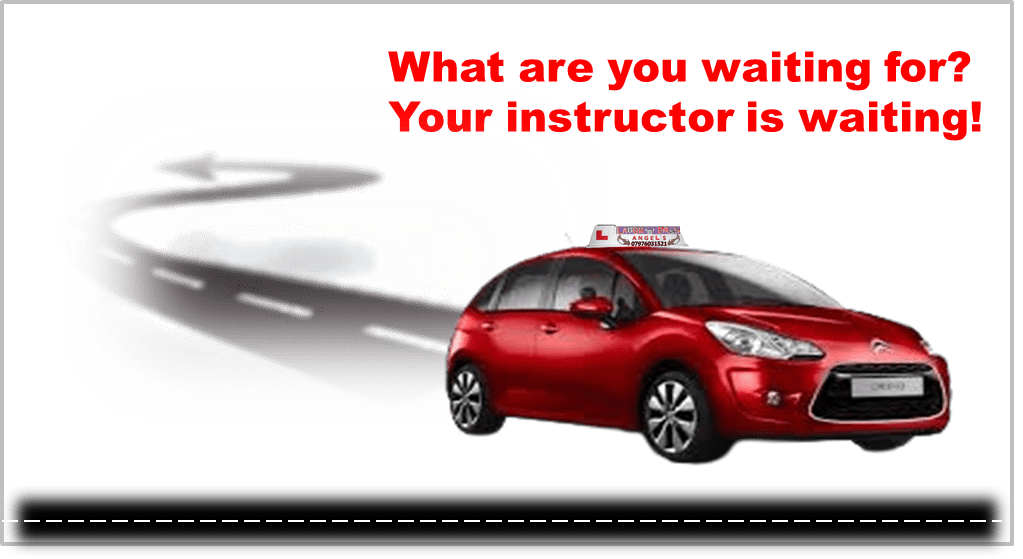Practical Driving Routines
If you have been taking Driving Lessons you may be familar with these and do not recognise these. They can help add structure to your driver
‘M.S.P.S.L & L.A.D A …’
When approaching any junction your driving Instructor should have discussed both these routines as a matter of course as learners need to carry out the M.S.P.S.L and the L.A.D.A routines.
MSM = Mirror, Signal, Manoevre
POM = Prepare, Observe, Move
Both the above taught within the moving off and stopping lessons
MSPSL = Mirrors, Signal, Position, Speed, Look
The MSPSL routine is used as you Approach junction or roundabouts. It is taught to learner drivers when discussing Junctions for the 1st Time and it is always used before the L.A.D.A routine.
You will need to put this routine into practice as it is an essential element in being able to approach junctions and roundabouts safely.
Mirrors
Check your centre and left door mirrors if you are turning left and your centre and right mirrors if you are turning right. This will allow you to determine how close vehicles are behind and to the side of you, this will enable you to time your signal correctly.
Signal
Give a left signal to the direction you intend to turn. Apply your signal at about 6 – 8 car lengths from the junction to be of maximum benefit to other road users.
Position
Keep to your normal driving position for a left turn, do not steer to the right when approaching your left turn, as you could stray into the path of a vehicle passing you.
If you intend to turn to right move towards the centre line and maintain a position just left of the centre. Your position reinforces your signal and helps let other road users know which way you intend to turn.
Speed
. . .for left turns
Use your footbrake progressively if necessary. You need to be slowing down to a speed suitable to be able turn left with control, the speed you will be about 10mph. You should be at this speed at least two car lengths before you reach the corner. Remember to lift and release the clutch pedal in a smooth manner before any turning is done. This will allow the engine to drive the car around the corner and you should have all this done before the turn, so give yourself plenty of time.
. . . for right turns
Use the same progressive braking, slowing down to a suitable speed. On approach to a right turn you may have to stop and give way to oncoming traffic, all oncoming traffic has priority
If no traffic is on coming choose a suitable gear and turn, providing it is safe turn into the new road. All of this should be completed about 1 car length from the road you are turning into.
Turn when the front of your car is level with the centre line of the road you are turning into. If you turn before this point you risk cutting the right corner of the road. If you turn after this point you could ‘loop’ towards the footpath on the far side and this would cause you to have a lapse in steering control.
You should not turn right in front of oncoming traffic if it would cause them to slow down or change direction. If you have to wait for a suitable gap, you should ensure your car is positioned straight, just left of the centre line with the front of your car just before the centre line of the road you are going to turn into.
Look
You have priority over oncoming traffic when turning left from a main road into a side road .
When turning right you should look for all hazards ESPECIALLY oncoming traffic. When deciding to turn right in front of oncoming traffic it must be done safely, you will need to use your judgment.
Ask yourself this question when deciding to go:
If I were a pedestrian standing at the kerb waiting to cross to the other side, would I have enough time to cross safely?
If the answer is ‘YES’ then you would normally have time to turn right.
If the answer is ‘NO’ you would not normally have time to turn right.
The LADA routine, When ?
This routine is usually used as you are about to emerge from a junction or enter a roundabout. It is a follow on from the M.S.P.S.L routine. As the MSPSL ends with Look, the LADA carries on starting with Look.
The LADA routine, Why ?
The LADA routine is to help you make decisions judged upon what you have seen when you have looked. There is no point looking around if you do not take on board what you see. Look early, and look often, including in the Mirrors. Move your eyes around, be aware of what is happening before you get there.
The LADA routine
Look
Look left and right frequently, your main focus should be on where you are going, i.e. if going ahead then glance left and right, but it is important that you look ahead as well, at crossroads and roundabouts you must look in all directions.
Assess
Assess what you see when you have looked, for example, is there anything coming from any direction, is the road clear of hazards, vehicles, pedestrians, or animals.
Or is there something coming, pedestrian crossing the road, kids playing etc..
Decide
Once you have assessed the situation, decide on what you are going to do. Are you going to go, or not?
Act
Once you have made you decision Act on it, try not to be hesitant, but try to give consideration to other road users. If you are pulling out into a gap in traffic, make sure you are not going to make the other driver brake too slow down because of your actions.
Just because you are aware the gap is there does not mean that the other driver has seen you. If you are going to pull across the path of another vehicle, i.e. turning right, use the following,
If you would walk across, then you can drive across





